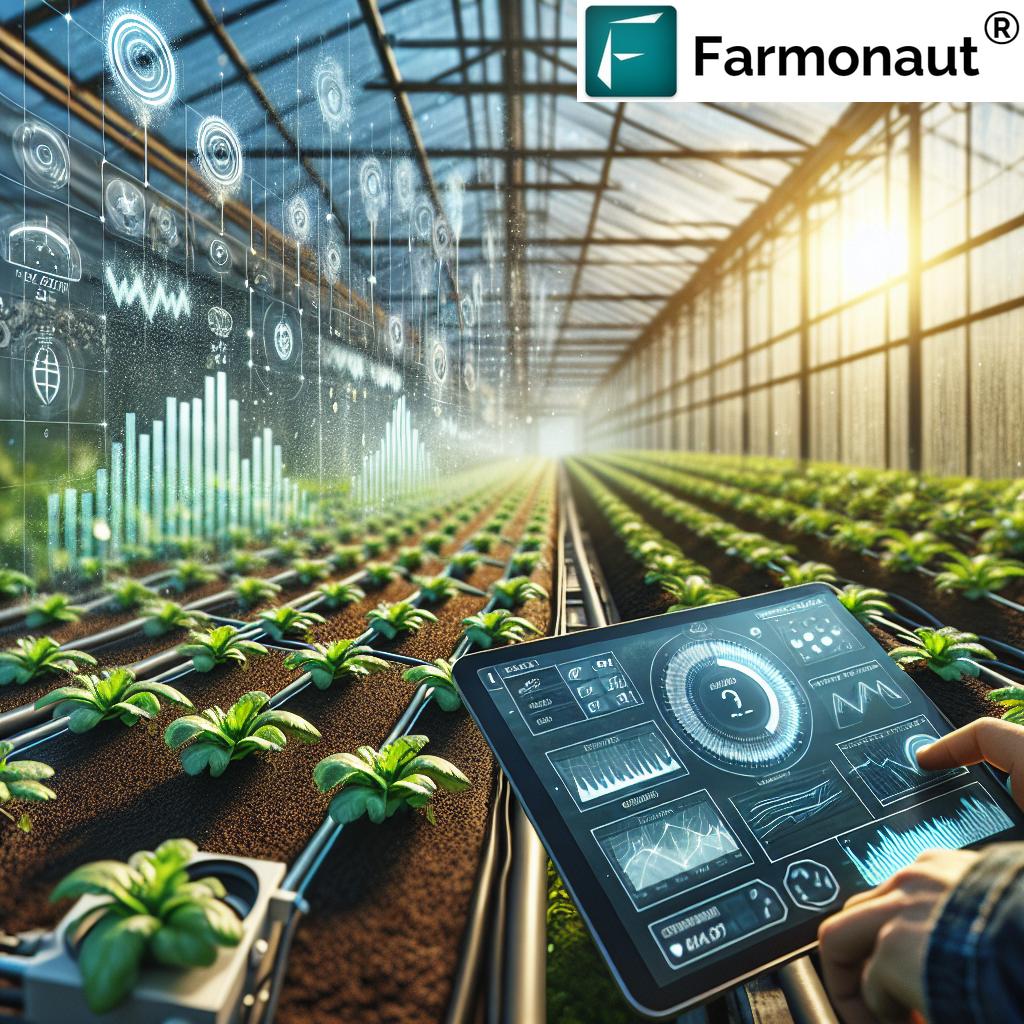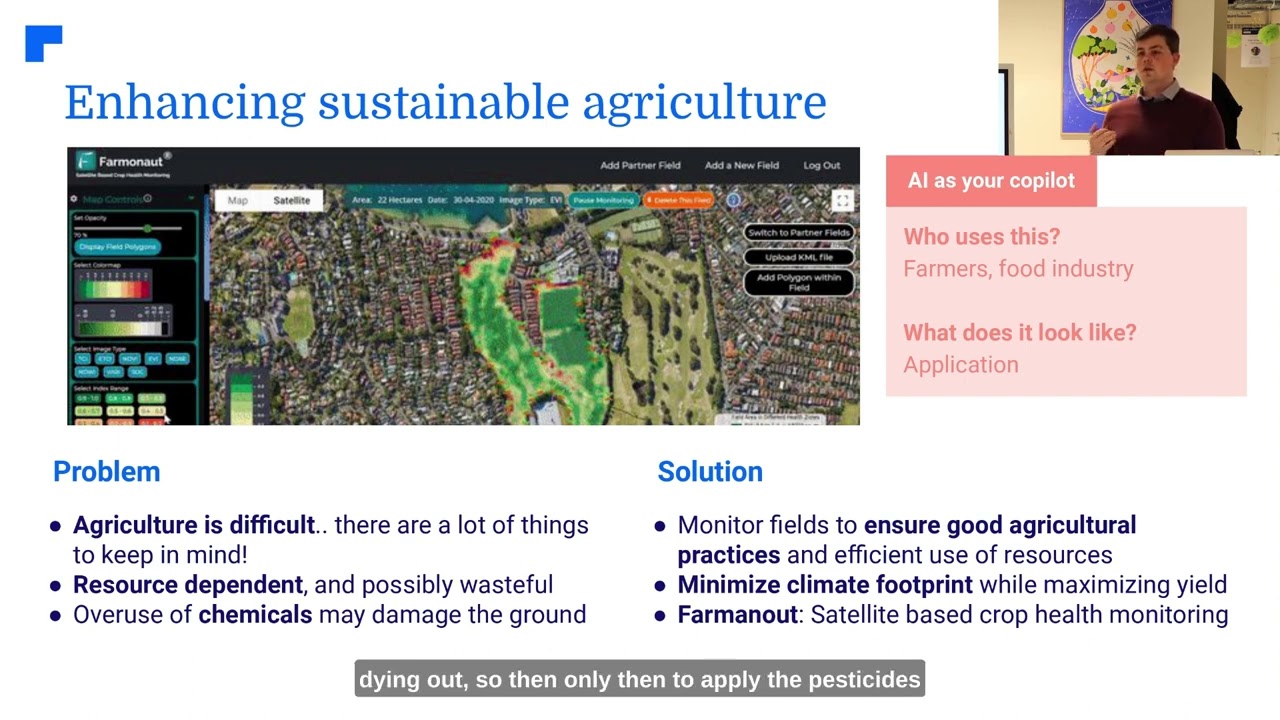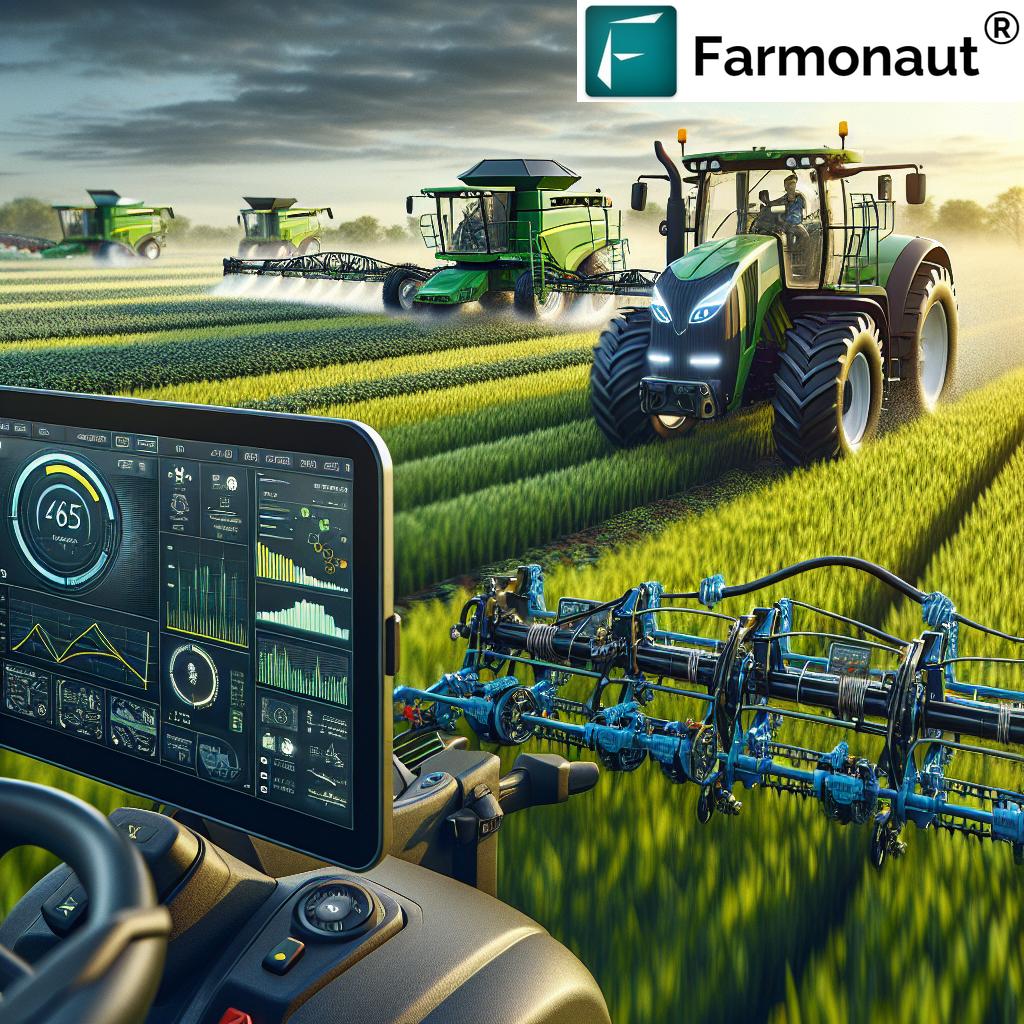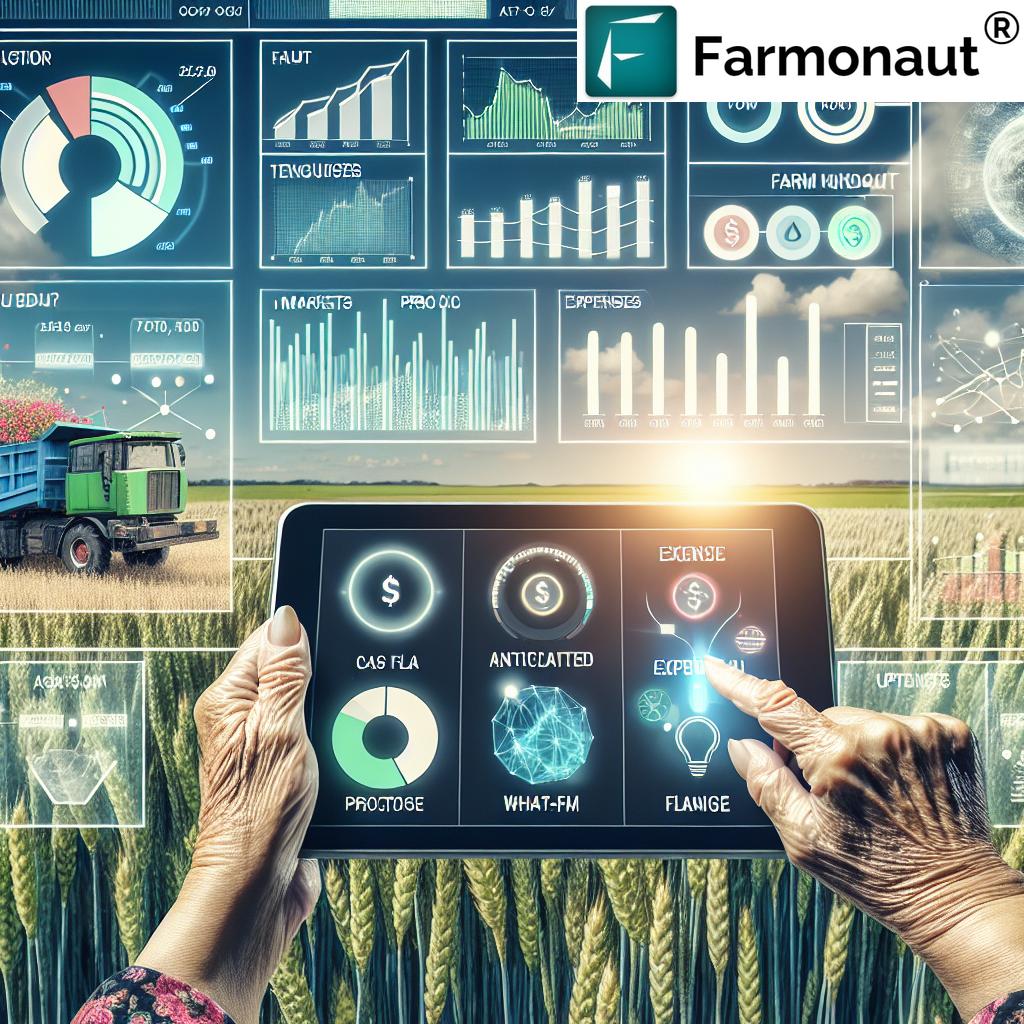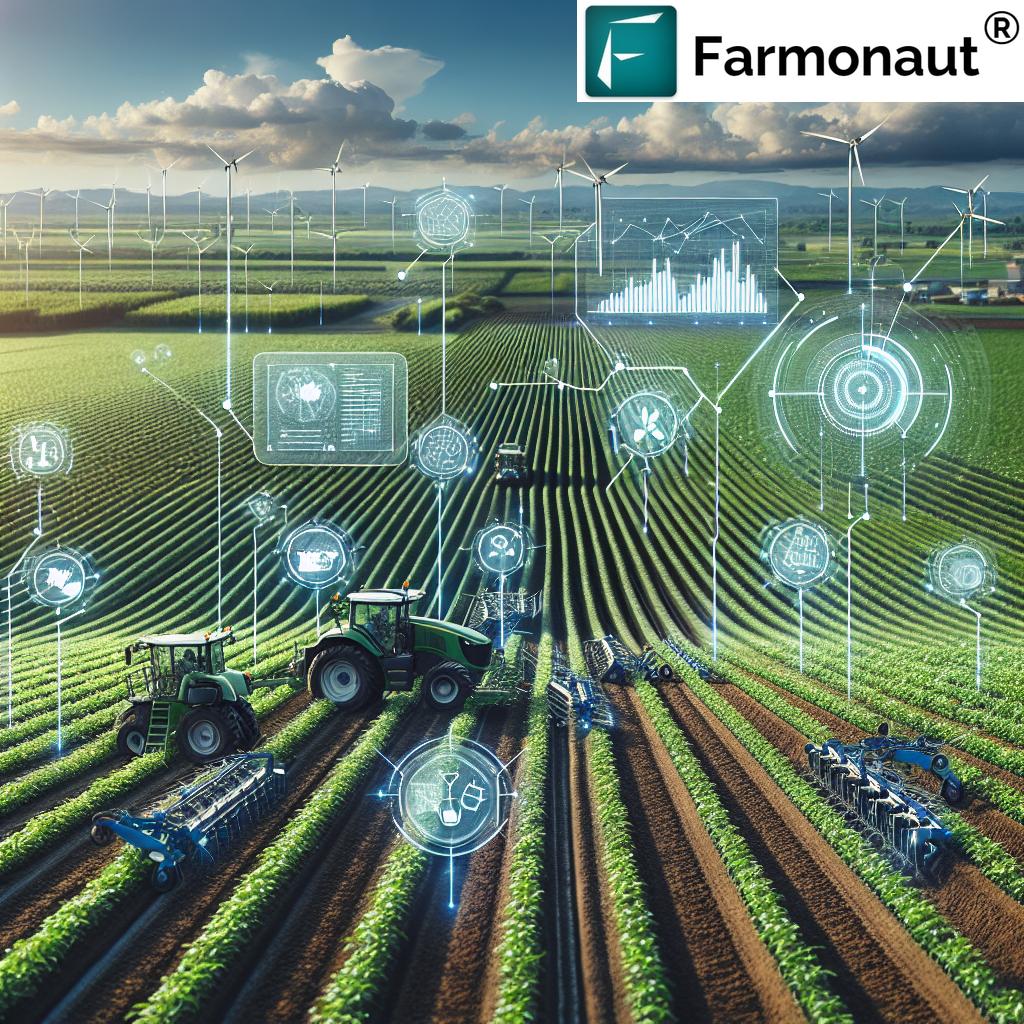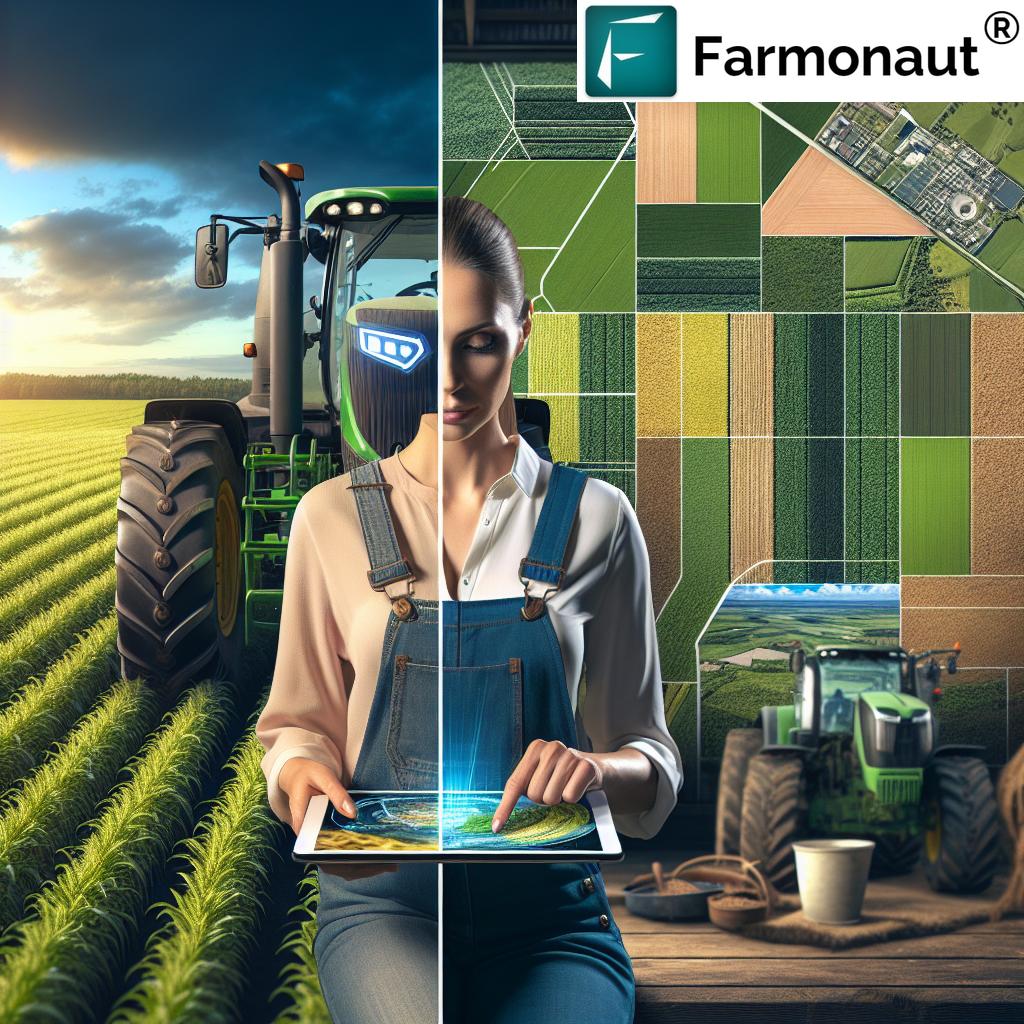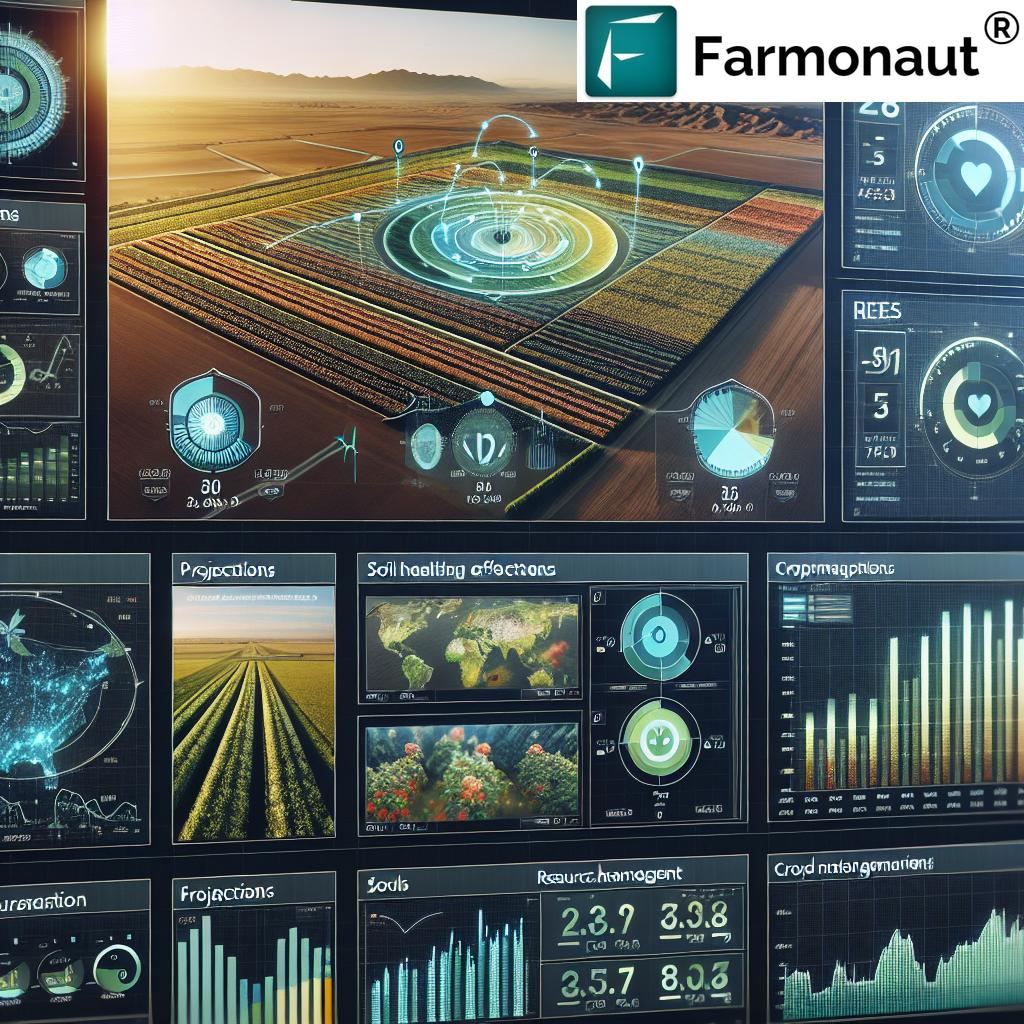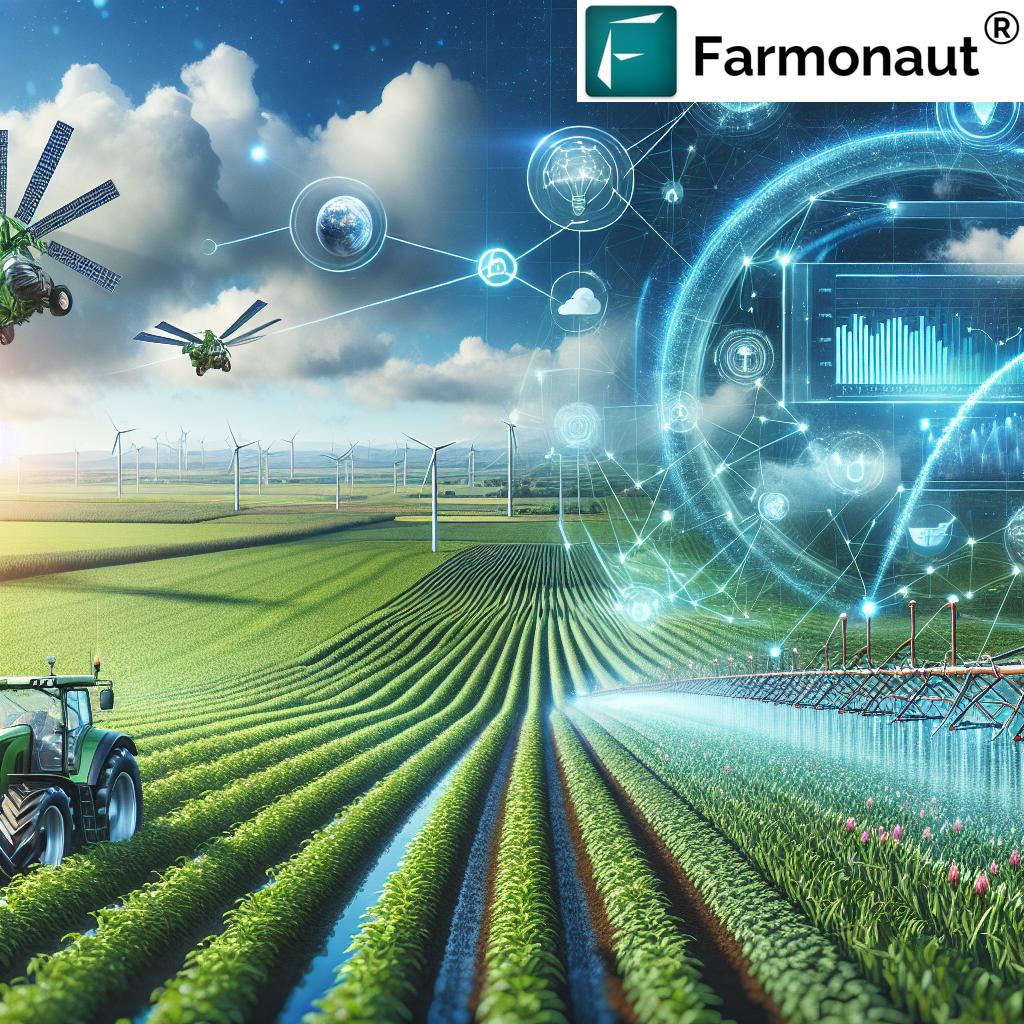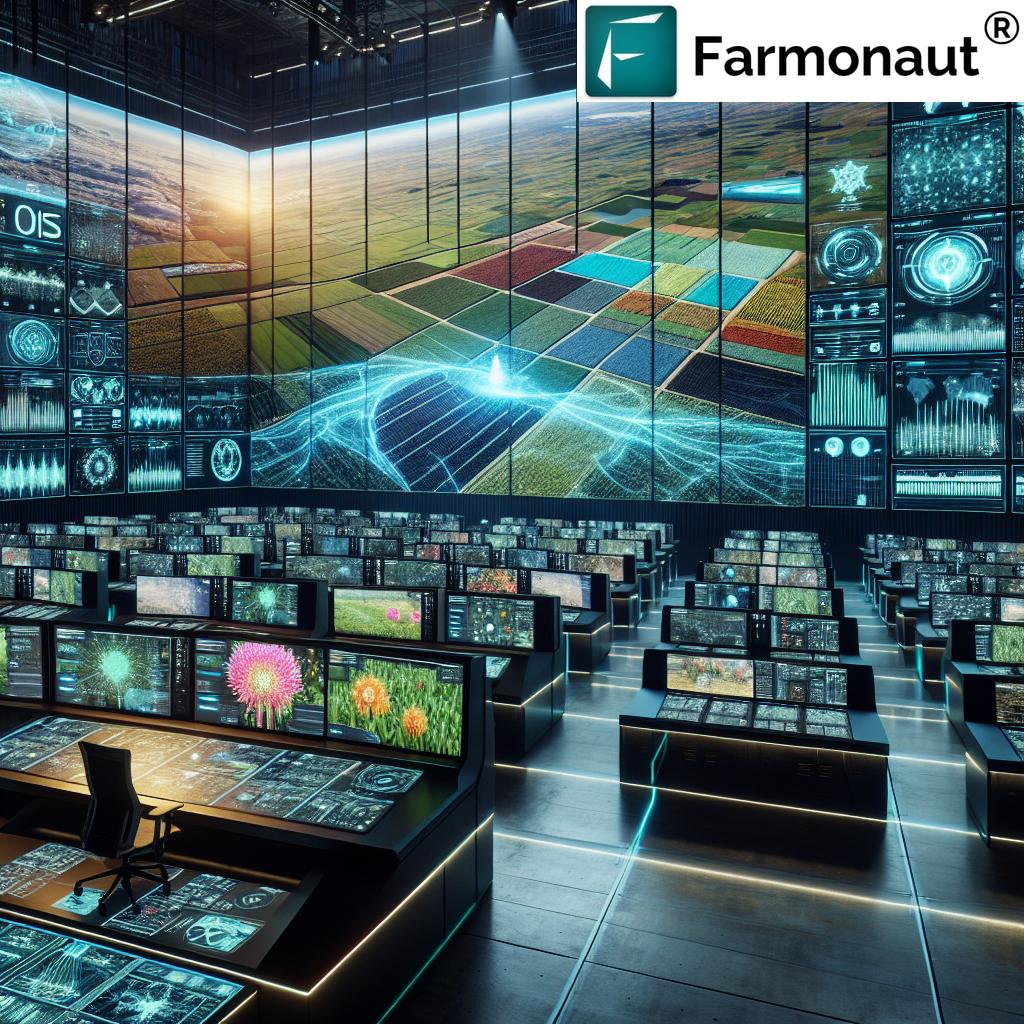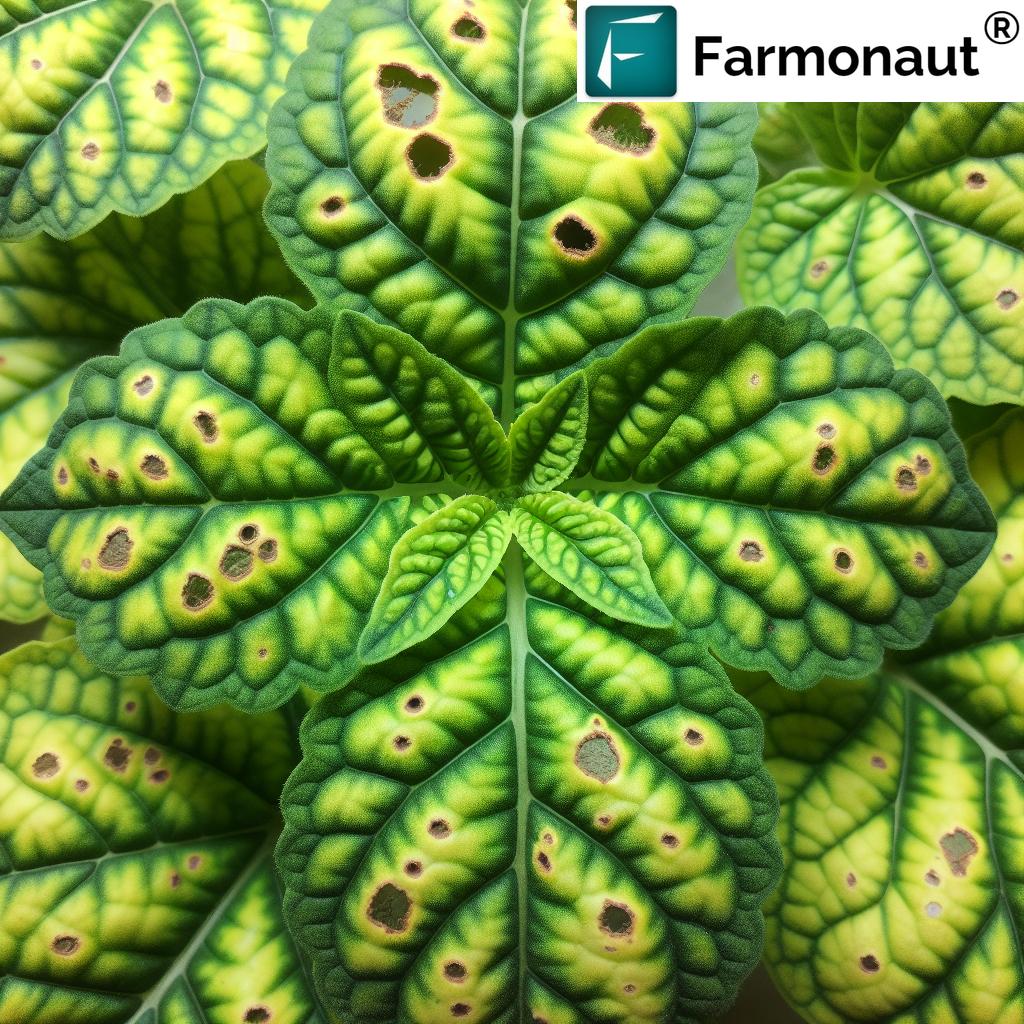Smart Farming: 7 Technologies Transforming Agriculture
“By 2025, the global smart farming market is projected to reach $22 billion, driven by AI and precision agriculture technologies.”
Summary: Smart Farming – Revolutionizing Agriculture for a Sustainable Future
Smart farming, frequently called precision agriculture, is transforming how we approach crop, soil, and resource management by integrating advanced technologies into traditional practices. Through the innovative use of AI in agriculture, IoT-enabled sensors, data analytics, and automation systems, farmers are now equipped to optimize yields, enhance efficiency, and achieve greater sustainability. In this comprehensive guide, we’ll dive deep into the seven leading technologies making this revolution possible, address the key benefits and challenges, and explore how cutting-edge solutions like Farmonaut are driving a new era of data-driven farming.
Introduction: The Age of Smart Farming
Agriculture has always been the backbone of civilization, but never before have we witnessed such rapid, transformative change as we do today. The world’s population is projected to surpass 9 billion by 2050, stretching our current food systems and resources. At the same time, climate change, labor shortages, and environmental concerns demand more sustainable, intelligent, and efficient agricultural methods. Smart farming technologies rise to this challenge by leveraging powerful innovations to create precision agriculture systems that:
- Enhance productivity and yields per hectare
- Reduce input costs and resource wastage
- Promote environmental sustainability and soil health
- Offer real-time data for truly informed decisions
- Enable better risk and resource management
From automated machinery and AI-powered analytics to blockchain traceability and agrivoltaics, technology is reshaping agriculture at every stage—from sowing and growing to harvesting and distribution.
Let’s explore the 7 most impactful technologies transforming the global agriculture landscape, their applications, advantages, and how they’re already redefining the future of food production.
7 Smart Farming Technologies Revolutionizing Agriculture
Each of these seven game-changing technologies plays a crucial part in precision agriculture, data-driven farming, and sustainable food production:
- IoT and Smart Sensors
- Artificial Intelligence and Machine Learning
- Automated Machinery and Robotics
- Data Analytics and Decision Support Systems
- Agrivoltaics
- Satellite Imaging
- Farm Management Platforms
“Precision agriculture can reduce fertilizer use by up to 20%, optimizing resources and minimizing environmental impact.”
1. Internet of Things (IoT) and Smart Sensors
The Internet of Things in agriculture is the critical nervous system of modern smart farms. By connecting sensors—such as soil moisture probes, weather stations, and crop monitors—to cloud platforms, these devices collect real-time data on:
- Soil moisture and temperature
- Air humidity and temperature
- Chemical composition (nutrients, pH, salinity)
- Plant and crop health (using infrared/NDVI sensors)
IoT in agriculture enables informed decisions and supports resource optimization for irrigation, fertilization, and pest control. These networks drive precision and efficiency in real time.
- Benefits: Supports data-driven farming, reduces water waste, and enhances precision agriculture.
- Impact: Farms using IoT sensors have achieved up to 25% higher yields with significant reduction in input costs.
Explore advanced, satellite-driven farm management solutions that leverage IoT data for large-scale agricultural administration and monitoring.
2. Artificial Intelligence (AI) and Machine Learning in Farming
AI in agriculture and machine learning in farming represent the analytical brains behind smart ecosystems. These algorithms analyze enormous datasets from sensors, satellite imagery, and historical records to:
- Predict weather patterns and suggest optimal planting and harvesting times
- Identify diseases, pests, and nutrient deficiencies early
- Automate expert decision-making, from irrigation schedules to fertilizer application
- Continuously improve predictions with feedback and new data
AI-driven advisory systems empower farmers with real-time, personalized recommendations, reducing reliance on manual labor and supporting advanced farm management.
- Example: Platforms like Farmonaut offer Jeevn AI Advisory System, delivering expert insights based on multispectral data for improved farm productivity and efficiency.
- Environmental Benefit: Early disease detection means less chemical use, supporting sustainable farming practices.
Learn more about the AI-driven product traceability systems that improve supply chain transparency and consumer trust.
3. Automated Machinery and Robotics
Autonomous tractors, harvesters, drones, and field robots perform critical farming tasks—such as sowing, irrigation, fertilization, crop spraying, and harvesting—with minimal human intervention. These machines significantly:
- Reduce labor costs and address shortages
- Enable precision application of inputs (fertilization, pesticides, seeds)
- Ensure uniform sowing and harvesting, boosting yields
- Support advanced mechanical weeding—such as the FarmWise AI weeder that uses computer vision to remove weeds efficiently, reducing chemicals
Deploying agricultural automation systems leads to rapid, precise, and scalable operations for farms of all sizes.
Discover fleet management solutions that help farmers optimize the utilization of agricultural machinery for cost reduction and efficient large-estate management.
4. Data Analytics and Decision Support Systems
The heart of data-driven farming is powerful data analytics. Platforms aggregate and process information from diverse sources—including IoT devices, satellite imagery, market trends, and weather feeds—to generate:
- In-depth insight into crop performance and soil health
- Risk analysis and disaster preparedness (e.g. drought or pest outbreaks)
- Automated financial forecasting for input planning and yield projections
- Real-time dashboards for farm monitoring and instant decision support
With these tools, farmers can optimize every aspect of the farming cycle—minimizing waste, improving yields, and maximizing profitability.
Explore how satellite-driven crop loan and insurance verification solutions use analytics to reduce fraud and speed up financing for farms.
5. Agrivoltaics: Integrating Solar and Farming
Agrivoltaics is the innovative practice of integrating solar panels within agricultural fields or pastures, allowing for the dual use of land for both energy generation and crop cultivation.
- Key Benefits: Provides renewable energy for farms, improved water efficiency (panels provide shade and reduce evaporation), and helps minimize soil erosion.
- Livestock Advantage: Offers natural shelter, reducing heat stress in animals.
- Crop Impact: Shade from panels can enhance yields of certain crops, especially in arid environments.
- Sustainability: Supports reduced carbon footprint and increases overall land use efficiency.
Farmonaut supports sustainable farming initiatives with carbon footprint monitoring tools that help track and reduce greenhouse emissions in agricultural operations.
6. Satellite Imaging and Remote Sensing in Agriculture
Satellite imaging provides a bird’s-eye view of vast agricultural lands, delivering frequent, high-resolution imagery for crop monitoring solutions. Multispectral and infrared imagery is used to:
- Monitor plant health (NDVI, NDRE indexes)
- Track soil moisture and water stress
- Detect pest or disease outbreaks at early stages
- Map variability for precision application of fertilizers and water
- Support advanced farm management over large and distributed holdings
Farmonaut delivers real-time satellite-based crop monitoring via web, Android, and iOS apps as well as API for agribusinesses and researchers. Our platform empowers farmers with affordable, accessible precision farming data—without requiring expensive on-ground hardware.
Visit our satellite monitoring platform to see how real-time imagery can transform your farm management.
7. Integrated Farm Management Platforms
Integrated farm management platforms empower users to orchestrate all aspects of modern agriculture—combining data analytics, sensors, AI, remote sensing, resource tracking, and advisory systems into a single dashboard. These cloud-based systems:
- Enable advanced farm management at scale (small, medium, or corporate farms)
- Allow users to visualize performance, compare past seasons, and forecast yields and finances
- Support resource and fleet tracking for efficient logistics
- Integrate blockchain for product traceability and food supply chain transparency
Farmonaut’s modular platform brings precision agriculture to every user—scalable from individual farmers to governments and corporate clients, with affordable plans tailored to each need.
Smart Farming Technology Comparison Table
| Technology Name | Key Application | Estimated Yield Improvement (%) | Estimated Cost Reduction (%) | Environmental Benefit | Real-World Example |
|---|---|---|---|---|---|
| AI-driven Sensors | Soil, weather, and crop health monitoring; precision input application | 15–30% | 10–20% | Reduces water and chemical use | IoT sensor networks for real-time farm decisions |
| Drones | Crop scouting, aerial mapping, spraying pesticides and fertilizers | 10–18% | 15–25% | Minimizes overspray, lessens soil compaction | Drone-based crop monitoring solutions |
| IoT Devices | Network of interconnected sensors/devices for real-time farm data collection | 15–20% | 10–18% | Optimizes irrigations, limits waste | Smart irrigation control, environmental sensing |
| Precision Irrigation | Automated water delivery informed by soil and weather data | 10–18% | 10–25% | Reduces water usage, conserves aquifers | Drip irrigation systems with embedded sensors |
| Robotics | Autonomous weeding, sowing, harvesting, and milking | 12–22% | 15–30% | Reduces chemical use, lowers fuel consumption | FarmWise AI-driven mechanical weeders |
| Satellite Imaging | Remote crop, soil, and resource monitoring at large scales | 12–25% | 12–20% | Enables site-specific management, prevents overuse of inputs | Farmonaut satellite-based monitoring |
| Farm Management Platforms | Integrated data analytics, planning, and resource management | 15–22% | 10–22% | Optimizes operations, enables sustainability reporting | Farmonaut all-in-one app & API |
How Farmonaut Empowers Precision Agriculture and Data-driven Farming
At Farmonaut, we understand that navigating the complex world of modern agriculture requires not only access to data, but also the right tools to turn that information into actionable insights. Our platform is built from the ground up to make precision agriculture affordable and accessible to farmers, agribusinesses, and governments—no matter the scale of operations.
Farmonaut’s Core Technologies
-
Satellite-Based Crop Health Monitoring:
We provide near-real-time multispectral data for soil moisture, crop vigor (NDVI), and pest/disease risk, empowering timely and informed agricultural decisions. -
Jeevn AI Personalized Advisory:
Our proprietary AI-driven advisory system analyzes satellite imagery and weather trends to recommend optimal practices for sowing, irrigation, fertilization, and harvesting—direct to your smartphone. -
Blockchain-based Product Traceability:
By leveraging blockchain, we ensure that food supply chains are tamper-proof, transparent, and trustworthy—enabling consumers and businesses to verify a product’s complete farm-to-fork journey. -
Fleet & Resource Management:
Agribusinesses and large farms can reduce operational costs by tracking vehicles, labor, and machinery in real-time for optimized resource allocation. -
Carbon Footprinting:
We help agribusinesses monitor and minimize their environmental impact, complying with sustainability standards and enhancing brand reputation.
Access our Satellite Data API for integrating powerful farm analytics into your own research or SaaS tools. Developers can consult our up-to-date API Documentation for technical details and use cases.
With subscription plans for individual farmers, agribusinesses, and institutional users—and an intuitive interface available via web, Android, iOS, and browser app—we make advanced farm management and data-driven farming easy for everyone.
Want to know how we’re empowering smarter, sustainable farming at any scale? Download our app today for a free demo!
Key Benefits: Smart Farming Technologies for Sustainable Agriculture
Adopting smart farming technologies isn’t just about upgrading to the latest gadgets. It’s a strategic move towards more reliable, profitable, and **sustainable farming practices**—addressing both economic and environmental concerns.
-
Increased Productivity and Yields:
- Algorithms and real-time monitoring enable optimal sowing, irrigation, fertilization, and disease control, maximizing output per hectare.
-
Resource Efficiency:
- IoT sensors, drones, and analytics reduce the overuse of water, fertilizers, and pesticides, lowering input costs and optimizing every drop or kilogram.
-
Environmental Sustainability:
- Precision applications minimize runoff/pollution.
- Agrivoltaics and carbon tracking directly reduce the carbon footprint.
- Automated machinery supports less invasive tillage, improving soil health.
-
Enhanced Traceability:
- Blockchain-based solutions make farm-to-fork processes transparent, supporting food safety, authenticity, and consumer confidence.
-
Farm Financial Stability:
- Data-driven insights support financial forecasting, risk management, and insurance/loan verification, making farm financing more reliable.
Visit our full platform overview for more on large-scale farm management, crop and forest plantation advisory, and sustainable resource management solutions.
Challenges in Implementing Smart Farming Technologies
While the opportunities of smart farming are vast, the adoption of precision agriculture technologies faces several key challenges:
-
Data Management:
- As farms generate terabytes of data, storage, analysis, and interpretation require sophisticated IT infrastructure. Data privacy and security are essential.
-
Connectivity Issues:
- Reliable internet is still lacking in many rural/agricultural areas, stalling real-time data transfer and automation systems.
-
High Initial Costs:
- Setting up new technology—sensors, drones, management platforms—can be expensive for small and medium farms.
-
Technical Skill Gap:
- Farmers and workers need training to fully utilize advanced systems, create custom analytics, and maintain smart devices.
At Farmonaut, we’re committed to making advanced technologies affordable and intuitive, so no farmer—or region—is left behind as agriculture transforms.
For affordable precision farming, explore our flexible carbon footprinting and API access options.
Global Adoption & The Future Outlook of Smart Farming
Countries everywhere are racing to integrate smart farming technologies to secure their food supplies and participate in the agricultural revolution:
- Australia: Farmers leverage sensor networks, real-time apps, and advanced analytics to monitor cattle, optimize feedlots, and improve yields, supported by national ag-tech investments.
- India: Innovative use of satellite data and AI advisory services helps millions pinpoint optimal sowing times, anticipate weather events, and enhance farm profits—with Farmonaut proudly at the forefront of accessible, affordable solutions.
- Europe & USA: Precision irrigation, automations, and blockchain traceability are promoted for sustainable food production, improved traceability, and reduced agricultural emissions.
The next chapter of precision agriculture will be defined by:
- Ultra-fast 5G connectivity for real-time, high-bandwidth sensor networks and streaming video analytics
- Next-gen AI and machine learning for highly personalized agronomic advice and automated in-field interventions
- New integrations—combining renewable energy, big data, and even robotics—at every scale
- Data-driven food supply chains supporting transparency and fair pricing, from seed to supermarket
Frequently Asked Questions (FAQ) on Smart Farming Technologies
What is smart farming and how does it differ from traditional agriculture?
Smart farming, or precision agriculture, uses advanced technologies like AI, IoT, data analytics, and automation to manage farms more efficiently. In contrast to traditional agriculture, smart farming systems optimize resource use, increase yields, and minimize waste by enabling farmers to make decisions based on real-time data rather than intuition or manual observations.
What are the main benefits of smart farming technologies?
- Greater productivity and crop/livestock yield
- Lower water, fertilizer, and pesticide usage
- Improved environmental sustainability and reduced emissions
- Enhanced traceability and transparency in food supply
- Cost savings and improved profitability for farmers
How does AI in agriculture improve farm management?
AI algorithms process vast data from sensors, satellites, and farm operations to forecast weather, detect diseases, and recommend optimal actions for irrigation, fertilization, and harvesting—empowering farmers to boost efficiency and reduce risks.
Is smart farming expensive to implement?
While there can be significant upfront costs (for sensors, drones, or data platforms), solutions such as Farmonaut are designed to be affordable and scalable. Over time, increased yields and reduced inputs typically outweigh the initial investments.
How does Farmonaut support sustainable agriculture?
We provide tools for carbon footprint monitoring, real-time crop health analysis, AI-based advisory, and resource management. These services help farmers implement sustainable, data-driven farming practices, reduce environmental impact, and maximize output.
What is agrivoltaics, and is it suitable for all farms?
Agrivoltaics is the integration of solar panels into farming operations for dual land use—producing both renewable energy and crops. It is particularly effective in regions with high sunlight, water scarcity, and a need for energy efficiency, though site-specific assessments are necessary before implementation.
What challenges remain for global smart farming adoption?
- Poor internet/connectivity in rural areas
- Lack of technical skills among farmers
- Data security and privacy concerns
- Fragmented adoption in smallholder regions
- Access to affordable, scalable precision farming platforms
How can I get started with Farmonaut?
Download our web or mobile app for a demo, or explore our satellite monitoring solutions. Review subscription options above or contact us about API integrations tailored to your project.
Conclusion: Charting the Future of Agriculture with Smart Farming
The global agriculture industry stands at a crossroads—pressured by population demands, environmental challenges, and the limits of conventional farming. Smart farming technologies—including IoT sensors, AI, robotics, automation, blockchain traceability, and renewable energy—offer a practical, scalable pathway to a resilient and sustainable food future.
By systematically applying data-driven farming and precision agriculture principles, farmers of all backgrounds can enhance productivity, optimize resources, and protect the environment. The journey may present challenges—but with accessible technologies like Farmonaut, the ability to gain real-time insights, act on AI-powered advice, and document traceable results is now in every farmer’s hands.
Let’s build a sustainable, efficient, and productive food system for tomorrow—today. Try Farmonaut to experience the power of smart farming firsthand!



